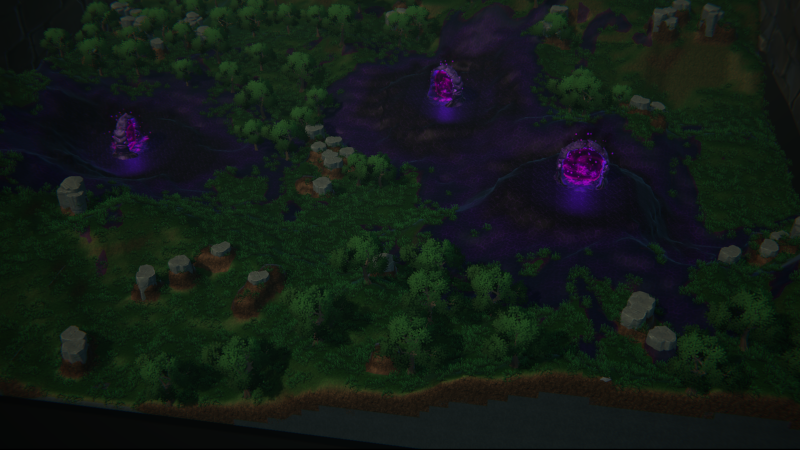Hey everyone,
Version v1.1 introduces some of the biggest changes to Stop the Blight so far, including a redesigned map progression system, a major terrain rendering update, GPU-based Blight rendering, and a new type of non-combat encounter that adds depth to both gameplay and story.
Hidden Outpost
Hidden Outposts are quiet, forgotten shelters left behind during the rise of the Blight. Found in any biome, they offer a random reward with no combat required. These rest sites provide helpful resources like coins, rune upgrades, or new spells for the run.
In future updates, they’ll also begin to reveal lore about the world’s history and the true origins of the Blight. Expect them to play a larger role as the story unfolds.
Node-Based Biome Maps

Previously, biome progression was pretty straightforward. You chose a biome, selected missions from a list each turn, and after a few encounters, the boss became available. It worked, but it didn’t offer much strategy and could feel repetitive.
The old system has been replaced with a node-based progression map. Here’s what’s new:
You now move from left to right across a connected network of nodes.
Each step gives you 1 to 3 encounter options, allowing for meaningful choices.
Every node displays its reward up front, helping you plan your route.
Branching paths let you choose between shorter or longer routes.
You can reroll available encounters after unlocking a specific upgrade.
Each biome now has its own unique map, offering six distinct layouts.
Smooth Voxel Terrain

Another big change in this update is the transition from cubic voxel terrain to a smooth rendering system using naive surface nets. This new approach brings several key improvements:
Better performance: Surface nets significantly reduce vertex and triangle counts. With Burst compilation and multithreading, each chunk now renders in about 3 to 6 milliseconds.
More Natural Terrain: Slopes, ridges, and curves now appear fluid rather than blocky, giving the world a more organic look.
Improved Tower Targeting: With smoother terrain, towers have a clearer line of sight and are more accurate when targeting enemies. Previously, blocky terrain could cause towers to hit block corners instead of their intended targets.
GPU-Based Blight Rendering

The terrain upgrade also led to a full rewrite of how the Blight system is rendered.
Previously, the Blight had to overwrite voxel materials directly. For example, changing a dirt block into a blighted one. Every change required re-rendering the affected terrain chunk, which slowed things down and locked the visuals to a rigid grid.
Now, all Blight rendering is handled entirely on the GPU using a custom shader. Here’s what that means:
Instant updates: When corruption changes, the Blight appears immediately with no terrain rebuild.
Huge performance boost: The CPU no longer has to touch terrain data or trigger re-renders.
Smoother visuals: The Blight spreads fluidly across the terrain, no longer stuck to the voxel grid.
Thank you to everyone who shared feedback and ideas. These changes are the direct result of those conversations. I’m excited to keep pushing the game forward and expanding on these systems in future updates.

Changed files in this update